VOLCANO, Hawaii (AP) — The Latest on the eruption of Kilauea volcano in Hawaii (all times local):
9:45 a.m.
A new lava fissure has opened up on Hawaii’s Big Island in the vicinity of a geothermal energy plant.
The U.S. Geological Survey said minor lava spatter erupted from the new fissure Saturday morning, which brings the total number of fissures to 16.
The Hawaiian Volcano Observatory reports the fissure opened 1 mile (1.6 kilometer) northeast of the last fissure and east of the Puna Geothermal Venture plant.
No significant lava flow has been reported so far.
Plant workers this week removed the 50,000 gallons of pentane stored at the site as a precaution.
Geologists warn that the Kilauea volcano could shoot out large boulders and ash out of its summit crater.
President Donald Trump on Friday declared a major disaster exists on the Big Island.
——
5:55 a.m.
Hawaii tourism officials are hoping Kilauea’s eruption won’t deter travelers from visiting the state’s largest island, even as geologists warn the volcano could soon shoot large boulders out of its summit.
Travel industry executives note most of the Big Island is free of eruption threats from Kilauea, which began spurting lava into a residential neighborhood last week.
George Szigeti, CEO of the Hawaii Tourism Authority says Kilauea is being monitored constantly and says the Big Island is “immense” and there are large parts that are unaffected by the volcano.
President Donald Trump on Friday declared a major disaster exists on the Big Island. The move will make federal financial assistance available to state and local governments as they repair roads, public parks, schools and water pipes damaged by the eruption.
——
As lava oozes, Hawaii officials say rest of island is open
VOLCANO, Hawaii — Warnings that Hawaii’s Kilauea volcano could shoot boulders and ash out of its summit crater are prompting people to rethink their plans to visit the Big Island.
But most of the rest of the island is free of volcanic hazards, and local tourism officials are hoping travelers will recognize the Big Island is ready to welcome them.
Rachel Smigelski-Theiss is among those who have shifted gears. She had intended to visit Kilauea’s summit with her husband and 5-year-old daughter and stay in Volcano, a town a few miles from the crater. Now they’ve cancelled their trip. She’s worried potential flight disruptions would strand them on the island.
“My equivalent of this — and I’m from South Florida where we have hurricanes — is driving quite literally into a hurricane,” she said.
Hawaii officials have had a busy month pleading with travelers to keep their plans even as dramatic images of natural disasters afflicting the islands have bombarded televisions and social media feeds.
In April, floods on Kauai Island made travelers nervous. Then last week, it was Kilauea volcano sending 2,200 degree (1,200 degree Celsius) lava bursting through cracks into people’s backyards in the Leilani Estates neighborhood. Then as Kilauea’s magma shifted underground, a magnitude-6.9 earthquake rocked the Big Island.
Since the quake, there have been frequent aftershocks. More than a dozen fissures oozing lava have opened in the ground. Adding to the distress, of the 36 structures destroyed, 26 were homes.
And now, scientists are warning that an explosive eruption may occur at the summit crater within weeks.
Tina Neal, the scientist-in-charge of the U.S. Geological Survey’s Hawaiian Volcanoes Observatory, said geologists don’t expect the summit eruption to be life-threatening so long as people stay out of the national park. Volcano and other nearby communities may be showered by pea-sized fragments or dusted with nontoxic ash but they aren’t expected to get hit by large boulders, she said.
Robert Hughes, the owner of Aloha Junction Bed and Breakfast in Volcano, said he’s had “tons” of cancellations since Wednesday when geologists first warned of the explosive eruption.
But Hughes, a 45-year resident of the village of some 2,500 people, suspects he’ll soon hear from adventurers and photographers who want to see the eruption up close.
“I’m not too worried about it because I’ve lived here so long and I’ve seen it go through lots of different episodes,” Hughes said.
The town, which is nestled in a lush rainforest a few miles from the crater, is a popular overnight spot for park visitors.
Hawaii Volcanoes National Park’s decision to close Friday due to the risk of an explosive eruption will discourage travelers, said Janet Coney, the office manager at Kilauea Lodge, an inn in Volcano. The lodge, which has 12 rooms and 4 cottages, has had a handful of cancellations. Coney is anticipating more depending on what happens.
There are also further potential risks where lava has been erupting 25 miles (40 kilometers) east of the crater in Leilani Estates. Scientists said the molten rock there could start moving faster if fresher, hotter magma emerges from the ground.
Neal said a chemical analysis of the lava that’s erupted since last week indicated it’s from magma that had been stored in the ground since a 1955 eruption. It’s been sluggish and somewhat cooler as a result, she said. But Kilauea could release hotter, faster-moving and more voluminous lava because magma has moving into the area from further up the volcano, she said.
The CEO of the Hawaii Tourism Authority, the agency that markets Hawaii to the world, said Kilauea is being monitored around the clock to provide the public with the best information. But George Szigeti noted that the Big Island is “immense” and there are large parts of the island unaffected by the volcano.
Like the town of Kamuela which is home to vast cattle ranches and Hawaii’s own cowboys, called paniolo. The coffee farms on the Kona side of the island, which is more than 100 miles (160 kilometers) away from where lava is erupting. There’s also the night sky visible from the 13,803-foot (4207-meter) summit of Mauna Kea, the island’s tallest peak and the location of some of the world’s most advanced telescopes.
Ross Birch, the executive director of the Island of Hawaii Visitors Bureau, said officials “walk the fine line.”
“We know what people are going through in Leilani Estates. And we don’t want to seem callous and inconsiderate in our messaging and our promotion of the island,” he said. At the same time, tourism is the island’s biggest industry and people’s livelihoods are dependent on visitors coming, he said.
“We want to make sure that everybody is still working and people have jobs to go back to,” Birch said.
On Friday, President Donald Trump declared a major disaster existed on the Big Island.
The move will make federal financial assistance available to state and local governments as they repair roads, public parks, schools and water pipes damaged by the eruption. It will also help cover costs for geologists and security personnel at roadblocks.
———
McAvoy reported from Honolulu. Associated Press journalist Jennifer Sinco Kelleher contributed to this report.
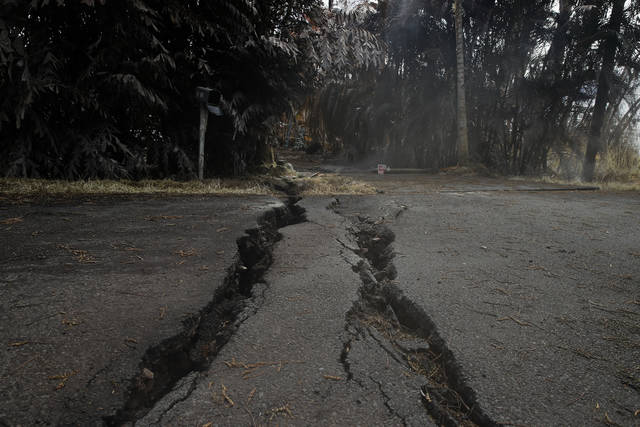
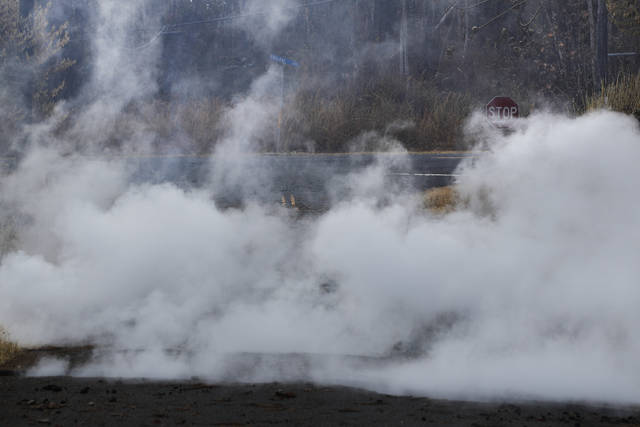
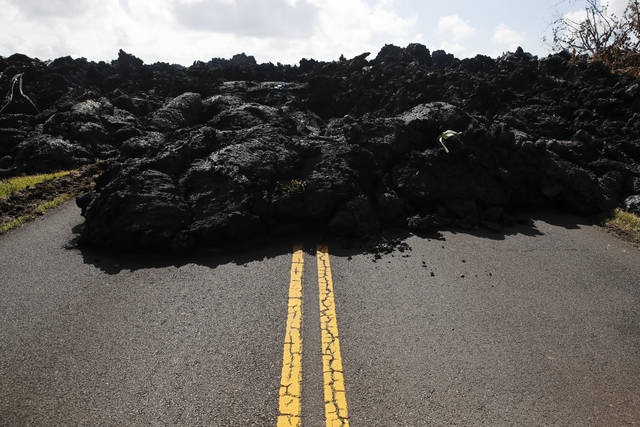
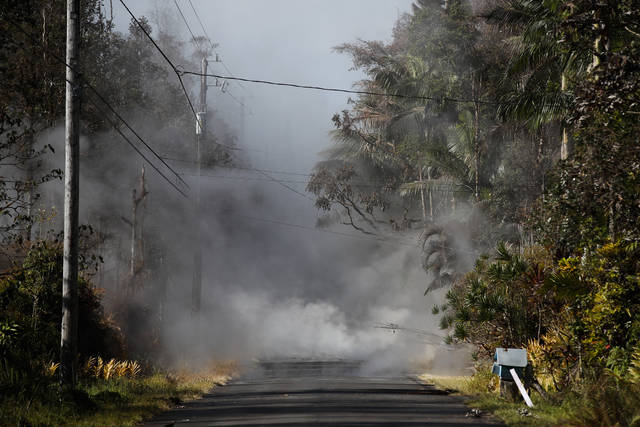
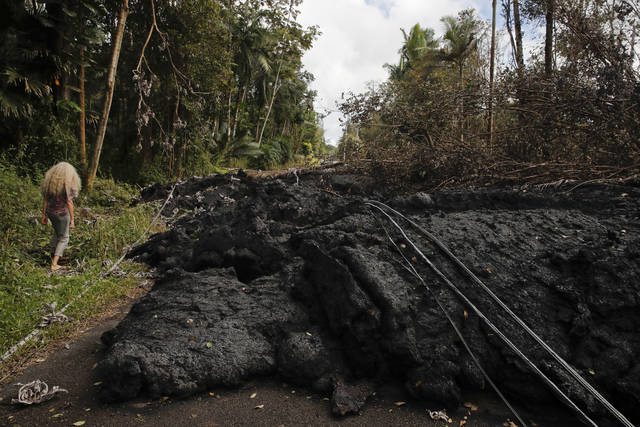
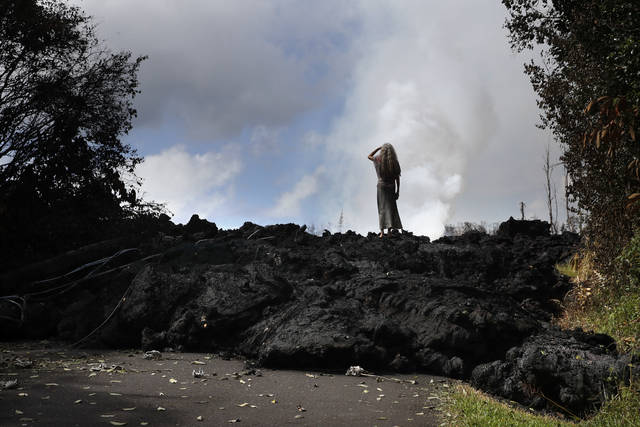


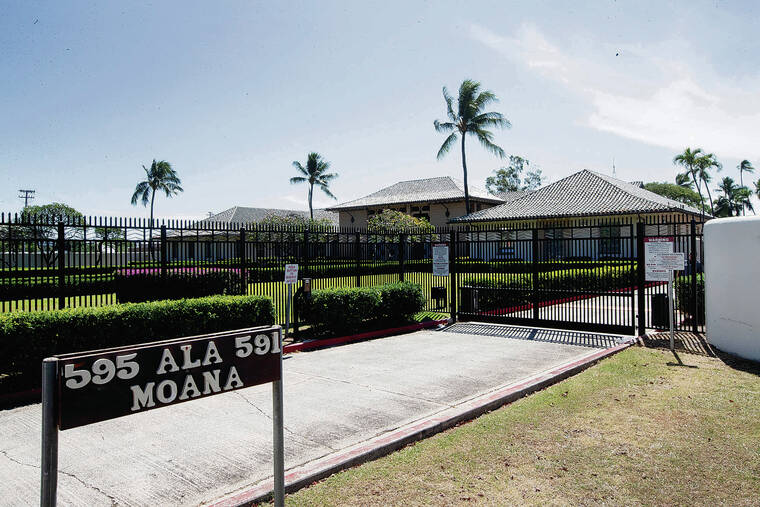


When you buy property on the Big Island you are shown maps of likely places the lava would flow. The reason is that you might not be able to get insurance in those areas. The realtors are very helpful in helping newcomers avoid those areas.
The people who built homes knew they could not be insured.
We’re hoping to fly to Lihue in 1/19 for our 50th wedding anniversary. If Kilauea continues to erupt, is there any possibility that Kauai could be affected by toxic gases from the volcano?
Looks like the magma is working its way toward the Southern tip of the Big Island in a straight line fashion. What is so concerning is that it follows a direct path along the rift zone and all it takes to break the entire section, since molten lava both expands the ground and lubricates it. A strong earthquake in the vicinity of around 7-7.5 is enough to cause the entire section to slip into the Pacific deep, causing a massive tsumami of over 300 meters high.
All it takes is a trigger event when Kilauea explodes when it reaches below the water table level.